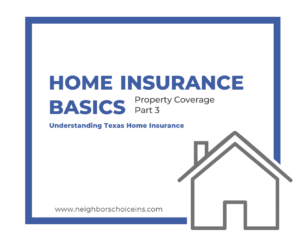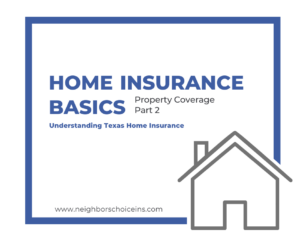You worked hard to accumulate your household possessions and the thought of it all being wiped out in a single disaster like a fire or tornado is almost too much to bear.
Fortunately, your homeowners insurance policy is designed to cover those big disasters, as well as the smaller but more frequent losses such as theft and some types of water damage. The amount of insurance you carry on personal property should be sufficient to take care of the big disasters, but how much is enough?
We’ll start our answer to this question by stating some facts about personal property coverage on the “typical” homeowners policy.
- Most homeowners policies cover personal property on a replacement cost basis when it is damaged by a covered cause of loss. That means the insurance company will pay to replace your old property – furniture, clothes and everything else – with all new “stuff.”
- Most homeowners policies cover personal property automatically for an amount equal to 60 percent of the amount carried on the home, without an additional charge. For example, if the policy covers your home for $250,000, then your personal property is covered for $150,000. Insurance companies figure that’s an appropriate amount for the “average” household, but that amount may or may not be sufficient for your family.
- Homeowners policies limit the amount of coverage on some types of property, including:
- Property at secondary or seasonal homes;
- Property in self-storage facilities;
- Money, coin collections;
- Securities, passports, tickets, stamps and other valuable papers;
- Watercraft and trailers;
- Jewelry, furs, watches, precious stones;
- Silverware and other serving pieces made of silver, gold or pewter;
- Firearms and related equipment; and
- Property used for business purposes.
Separate these items from the total value of your property and ask your agent how much coverage your homeowners policy provides on these items. Then you and your agent can decide the best way to cover these items – either by increasing the limit or obtaining coverage on a different policy.
Now back to the original question: What’s the best way to determine the replacement value of your personal belongings so you can purchase an adequate amount of insurance? The best way we know is to do an inventory of your possessions.
Conducting a Home Inventory
An inventory of your possessions actually serves two purposes.
First, it helps you determine whether the amount of insurance on your current policy is sufficient to cover a total loss of your possessions in a fire or other disaster.
Second, it serves as the record you’ll need to make a claim. After the trauma of a disaster, there’s no way you’ll be able to remember everything you owned.
Conducting a home inventory can be a fun project for the entire family and it doesn’t have to be a huge burden on your time and energy. Here are some ideas you can use.
Make a Photographic or Video Record.
This is the easiest and quickest way to begin. And if your home inventory effort ends with this step, it’s better than doing nothing at all. After a disaster or other insured event, a photographic or video record of your possessions provides proof of ownership and helps you remember everything you own. Walk through your home and take a picture of every room from different angles. Open cabinets and closets and take pictures of their contents. Don’t forget the garage, basement and attic.
Make a List.
Take one room at a time. Make of list of the items in each room and write down how much it would cost to replace each item. Keep in mind that the insurance company is only obligated to pay the cost to replace items with similar kind and quality. In other words, if you bought it at Sears, don’t consult a Neiman-Marcus catalog! Add up all the items you listed, add a little cushion for inflation, and compare the result to the current limit of insurance on your policy. If you need a higher amount, ask your agent to increase the limit.
Keep the List Current.
Now that you have a record of everything you own with today’s replacement values, keep it up to date. As you purchase or get rid of items, add them to or remove them from the list. When your policy renews each year, take a fresh look at your list and adjust the replacement values if necessary due to inflation.
Keep a Copy Away from Home.
The photographic or video record and your list won’t do you much good if it burns up or blows away with everything else. Make a copy of all your records – either a physical copy or a digital copy – and store it somewhere else. A safe deposit box, your office or the home of a friend or family member are all good choices.
Helpful Software.
There are many software options and mobile apps that can help you create your home inventory and keep it up to date. The Insurance Information Institute offers free Web-based home inventory software called Know Your Stuff®. The software includes secure online storage so you can access your inventory anywhere, anytime. You can also download an app in the iTunes App Store (search for “iii inventory”) or from Google Play.
This article was made available to our agency by the Independent Insurance Agents of Texas, which is solely responsible for its content. We have customized this article with additional relevant information. Please read your insurance policy. If there is any conflict between the information in this article and the actual terms and conditions of your policy, the terms and conditions of your policy will apply. The Independent Insurance Agents of Texas is a non-profit association of more than 1,500 insurance agencies in Texas, dedicated to helping its members succeed, in part by providing technical resources that explain insurance policies sold to their customers.





